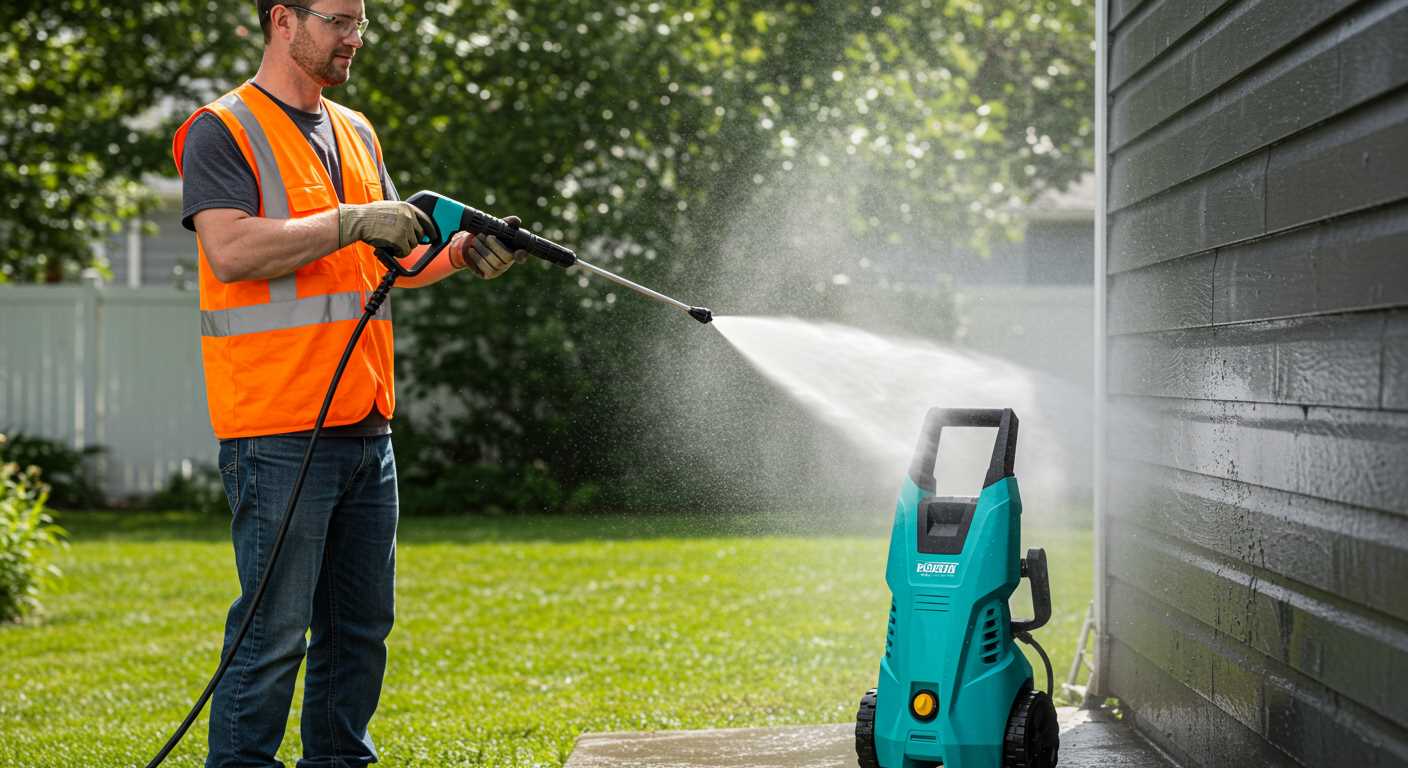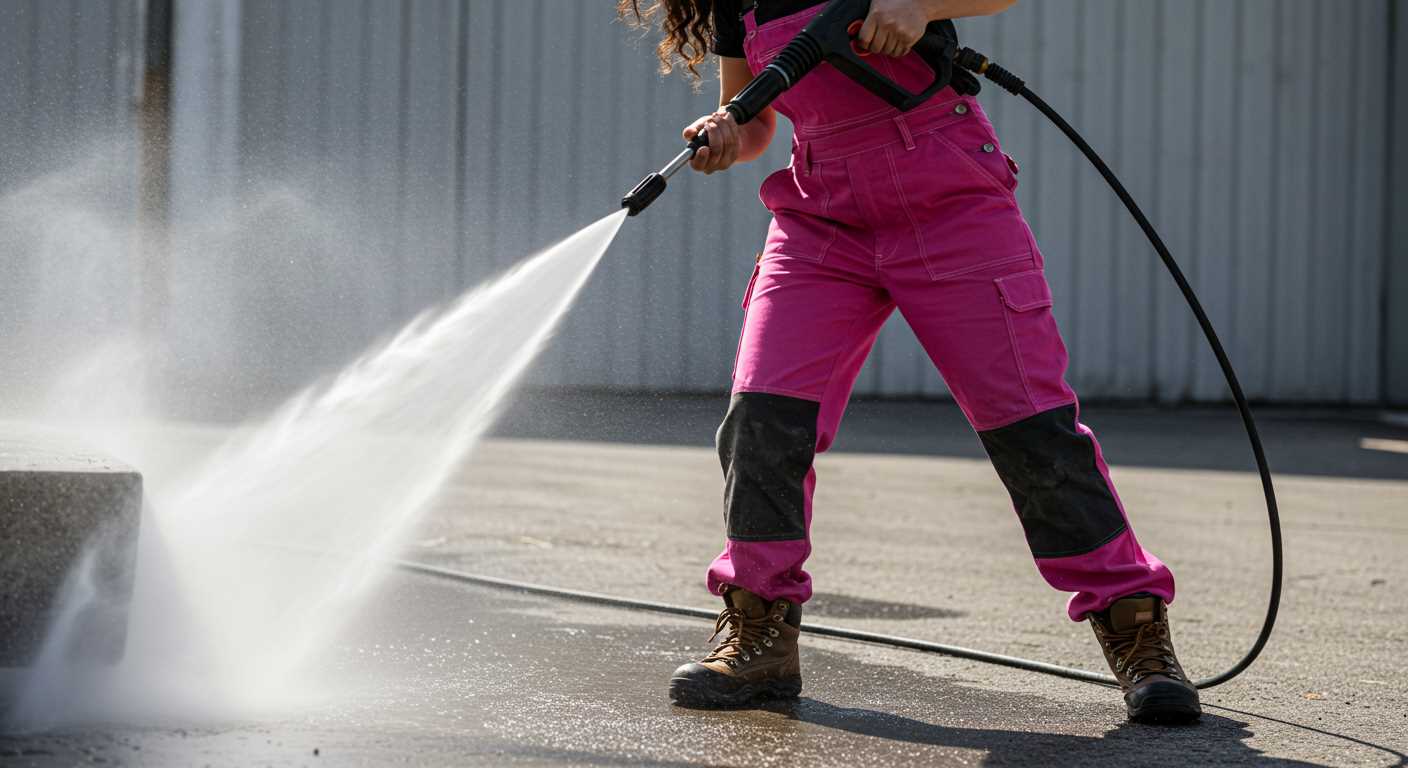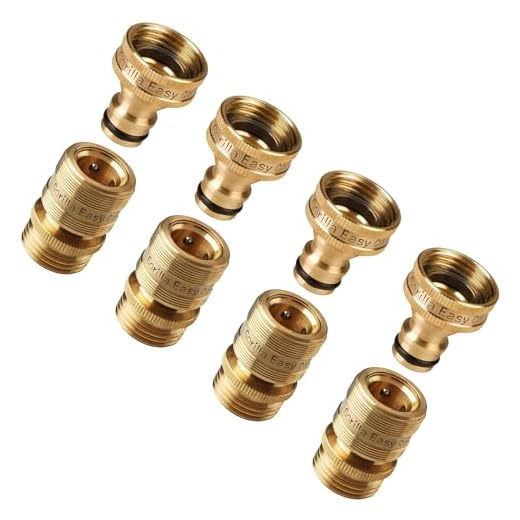



Utilising your cleaning device without a standard outdoor water connection is entirely possible with a few practical adjustments. I recommend exploring the use of a water reservoir, such as a large bucket or tank, which can provide a sufficient supply for your tasks.
For optimal results, consider using a submersible pump connected to your cleaning unit. This method draws water directly from the reservoir and ensures a steady flow. Ensure the pump matches the specifications of your equipment for seamless operation.
Another effective solution involves utilising a hose that can run from an indoor tap. This approach provides direct access to your water source, eliminating the need for additional equipment while enjoying convenient connectivity. With these methods, maintaining cleanliness and efficiency becomes straightforward, regardless of your outdoor plumbing setup.
Understanding Pressure Washer Water Source Requirements
For optimal operation, it’s vital to provide a clean, reliable water source for your cleaning equipment. Without an accessible outdoor plumbing fixture, alternative methods exist to supply water. One of the simplest solutions involves using a water storage tank or barrel. Ensure that it is filled and that a suitable hose can connect directly to your machine’s inlet. This setup allows for flexibility and convenience.
Another option is to utilise a rainwater harvesting system. If you have such a system installed, it can serve as an excellent water source. Just ensure that the collected water is filtered as sediment or debris can cause damage to the equipment.
A strong garden hose from an indoor sink is another feasible approach. Just make sure the connection securely fits and that the hose is adequately long to reach your working area. Monitor the flow rate; insufficient pressure may hinder cleaning performance.
Portable electric pumps can be invaluable as well, allowing you to draw water from nearby sources, like a pond or well. Choose a pump appropriate for your yard size and cleaning needs; this option offers versatility in water sourcing.
Evaluate each method based on your situation and requirements. Each source choice impacts the effectiveness of the performance, so it’s important to ensure a steady, adequate supply to achieve the cleaning results desired.
Alternative Water Sources for Pressure Washing
One effective method for sourcing water involves using a large storage tank or a rainwater collection system. Tanks can be filled manually or connected to a rainwater harvesting system, allowing for substantial water supply during cleaning tasks. Ensuring proper filtration can prevent debris from damaging equipment.
Utilising Buckets and Hoses
An alternative is using buckets. Fill a bucket with water and connect a garden hose to the pressure cleaning unit, enabling the device to draw water from the bucket. This requires monitoring the water level frequently to prevent the unit from running dry.
Connecting to Indoor Plumbing
If feasible, consider hooking up to an indoor plumbing system. A long hose can reach from a sink or bathtub, providing a constant water source. This method may require adjustments to ensure proper pressure and flow for effective operation.
Setting Up a Rainwater Collection System

Collecting rainwater is an effective method to obtain a reliable source of water for outdoor cleaning tasks. This approach can reduce dependency on a conventional water supply and provide an eco-friendly alternative. Here’s how to establish a rainwater collection system.
Components Needed

- Rainwater Harvesting System: This typically includes a roof catchment, gutters, and downspouts to channel rainwater into your storage container.
- Storage Tank: Opt for a durable container, such as a rain barrel or a larger tank, that can hold the volume of water you anticipate collecting.
- First Flush Diverter: This device is crucial for diverting the initial flow of rainwater, which may contain debris or contaminants, away from your storage tank.
Installation Steps
- Position the storage barrel or tank under the downspout to optimise collection.
- Install gutters, ensuring they are free of obstructions and angled correctly towards the downspout.
- Attach the first flush diverter to redirect initial runoff, connecting it to the storage tank so cleaner water flows in.
- Include an overflow outlet for excess rainwater to prevent overflow issues during heavy rainfall.
Regular maintenance is essential. Ensure filters are clean, and check for blockages in gutters and downspouts. This system provides a sustainable way to gather water, making it readily available for various cleaning tasks.
Using a Bucket for Pressure Washing
Filling a bucket with water offers a practical solution to supply the necessary liquid for cleaning tasks. Begin by selecting a robust container with a minimum capacity of 5 to 10 litres to ensure a sufficient amount of water is available for larger jobs.
Position the bucket close to the area being cleaned. This will minimise the need to constantly refill, saving time during the cleaning process. An effective strategy is to utilise a submersible pump or a siphon system, drawing from the bucket and maintaining consistent water flow.
To enhance efficiency, consider adding a filter or a small mesh screen within the bucket. This will prevent debris from entering the system, protecting the equipment from potential damage caused by impurities. Regularly check and maintain the water quality to avoid any clogs or performance issues.
Monitor water levels frequently, especially during extended cleaning tasks. Having an additional bucket filled with water on standby can significantly speed up the operation. This will allow continued usage without interruptions for refilling.
Make adjustments based on the type of cleaning performed. For heavier grime, mixing suitable detergents with the water in the bucket can improve results. Always follow the manufacturer’s guidelines regarding chemical compatibility with the equipment.
Utilising a bucket not only provides a flexible water source but also encourages thoughtful water usage, preventing unnecessary wastage while effectively tackling cleaning challenges.
Connecting a Pressure Washer to Indoor Taps
Attaching an outdoor cleaning device directly to an indoor faucet is a viable alternative for those without external water access. Start by identifying the type of faucet at your location. Standard kitchen or bathroom taps typically need an adapter to fit the washer’s hose.
Measure the faucet’s thread size. Common sizes are ½ inch, ¾ inch, or 1 inch. Once you have the right measurements, purchase a suitable adapter or connector that matches the tap size. This will often come with a rubber washer to ensure a tight seal, preventing leaks.
After obtaining the necessary equipment, proceed as follows:
| Step | Action |
|---|---|
| 1 | Turn off the tap to avoid water wastage or flooding. |
| 2 | Remove the aerator from the faucet, if present, to allow the adapter to fit properly. |
| 3 | Attach the adapter to the faucet, ensuring it is tightened securely. |
| 4 | Connect the hose from your equipment to the other end of the adapter. |
| 5 | Turn on the faucet and check for any leaks before starting the cleaning process. |
Indoor water pressure may differ from outdoor sources. If the performance is not as strong, consider letting the device draw water from a container instead, as additional pressure may be required for optimal operation.
In instances of frequent indoor usage, remember to keep an eye on potential wear and tear on the faucet thread. Regularly check connections to avoid any unnecessary damages.
Utilising a Water Tank or Storage Container
Starting with a water tank can significantly enhance cleaning efficiency, especially in areas lacking direct plumbing connections. A durable storage container with a capacity of at least 100 litres is ideal for extended tasks. Ensure the tank has a secure lid to prevent contamination and debris from entering.
Position the container on a stable surface, ideally elevated to provide gravity-fed water flow, as this minimises strain on the pump. Connect a hose from the tank to the inlet of the cleaning device, choosing one that fits snugly to prevent leaks.
Monitor the water level regularly during use; running the pump dry can lead to damage. Consider using a float valve to maintain a constant water level automatically, which simplifies the process. This setup also allows for an effective solution during droughts or in regions where water supply is limited.
For those looking to save costs, repurposing an old tank can be beneficial. Just ensure it is clean and free from residues that could affect performance. Regular maintenance of the tank is necessary to prevent algal growth; using biocides designed for storage tanks will keep the water fresh.
Vehicle-mounted tanks are an excellent option for mobile cleaning operations, providing portability and easy access to water at various locations. Make sure to comply with local regulations regarding water transport and storage to avoid fines.
In summary, utilising a water tank or a storage container offers flexibility and convenience, allowing for effective washing tasks even in locations lacking traditional water sources.
Tips for Maintaining Water Pressure Without a Tap
Consider utilising a high-capacity storage container equipped with a float valve to ensure consistent water levels for your machine. This setup automatically refills when the water drops below a certain level, preventing interruptions during tasks.
Adopt Efficient Water Use Techniques
Apply a mix of concentrated cleaning solutions that require less water for rinsing. Many products on the market promote effective cleaning with limited liquid, which can help conserve your water supply while still achieving outstanding results.
Regular Equipment Maintenance
Keep the inlet filter and hoses clean to minimise flow restrictions. Blockages can significantly reduce the efficiency of water intake. Regularly check for kinks or damage in hoses that might impede water flow.
Monitor the nozzle size and type; using the correct nozzle can optimise both pressure and water usage. Adjusting nozzles to fit specific tasks can save resources and improve cleaning effectiveness.
Lastly, ensure your machine is properly calibrated. An accurately set machine will function more efficiently and maintain consistent water pressure throughout its operation.
Safety Considerations When Using Alternative Water Sources

Always ensure any water source used is clean and free from contaminants. Dirty water can cause damage to equipment and lead to poor cleaning results.
Protecting Equipment
- Monitor the water quality regularly. Filters should be inspected frequently to prevent clogging.
- Use a suitable strainer on the inlet to avoid debris entering the system, which can cause malfunction.
- Check hoses and connections for leaks to maintain optimal water flow.
Personal Safety
- Wear appropriate protective gear, including gloves and goggles, to safeguard against splashes and flying debris.
- Ensure the area is free from hazards such as electricity or sharp objects.
- Make sure to maintain a safe distance from the water source to avoid slips and falls.
Consider using stabilisers for water tanks to avoid any accidental tipping when full. Properly securing temporary water sources is vital to ensure a safe working environment.
During operation, remain vigilant about surrounding conditions, including weather changes that may affect visibility or safety. It’s advisable to have a spotter if working in potentially risky areas.











